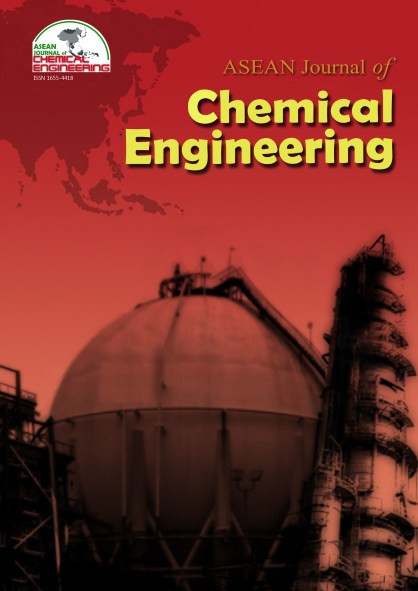Net Energy and Carbon Flow Analyses on four pathways for the utilization of Natural Gas as Automotive Fuel
Abstract
The development of the natural gas (NG) reserves ot the Philipines has led to interest in the use of NG as an automotive fuel. Successful utilation of NG as a fuel or motor vehicles will lessen the caunt dependence on imported petroleum whe reducing air emisions. particularly that of CO, which is the predominant cause of global climate change, energy analysis (NEA) and carbon flow analysis (CFA) were used to compare four dierent pathways for NG utilization: (a-b) direct use as fuel in liquified (LNG) or compressed (CNG) from; (c) conversion to methanol; and (d) convsion ta electncit for electric vehicle (EV) or hybrid electric vehicle (H)propusion. The assement was performed using fhe GREET 1 .5a fueI cycle inventory model to determine the best pactical environmental option (BPEO) among the our altematives. ModeI unceainties we dealt with using sensitivitas analysisl. When the analysis when based on 1 MJ of fuel energy delivered to the refueling site, CNG was the BPO, foow by the LNG, metanol, and elttricity pathways. Due to the variability ot fuel processing or conversion effectivities, the difference between LNG and methanoI was Found minimal. Basing the analys on 1km traveled by the end user vehicle, the differences in fueI economic of end user vehicles had a drastic effect on the assessment results. EIectricity was found to be the BPEO followed by metanol.CNG. and LNG. Establishing a definite ranking of the options, however was difficult due to the high degreeo of uncertainty in vehicle fueI economy projections.
References
Curran, M., ed. (1996). Environmental life-cycle assessment, John Wiley&Sons, New York.
General Motors Corporation, Argonne National Laboratory, BP, ExxonMobil, and Shell. (2001). Well-to-tank energy use and greenhouse gas emissions of advanced fuel/vehicle systems: North American analysis. Project report, Argonne National Laboratory, Illinois.
Hocking, M. B. (1999). "Net energy expenditure: Amethod for assessing the environmental impact of technologies." Measures of environmental performance and ecosystem condition. P. C. Schulze, ed. National Academy Press, Washington, D.C.
ISO 14040. (1997). Environmental management Life cycle assessment-Principles and framework, International Organisation for Standardisation, Geneva.
Nieuwlaar, E., Alsena, E., and Van Engelenburg, B. (1996). "Using life cycle assessment for the environmental evaluation of greenhouse gas mitigation options." Energy Conversion and Management, 37, 831-836.
Philippine Department of Energy. (2000). Philippine Energy Plan 2000-09, Manila.
Philippine Department of Environment and Natural Resources. (2000). Implementing Rules and Regulations of RA8749.Clean Air Act of 1999, Manila.
Poulton, M. L. (1994). Alternative fuels for road vehicles, Computational Mechanics Publications, Southampton, U.K.
Society for Environmental Toxicology and Chemistry. (1991). A technical framework for life cycle assessments, Washington,
D.C. Tan, R. R., and Culaba, A. B. (2002). "Life cycle assessment of compressed and natural gas with possibiliştic uncertainty analysis of greenhouse gas emissions." Inhenyeriya, in press.
Wang, M. (1999). GREET 1.5- Transportation fuel cycle model, Final Report ANL/ESD 39, Argonne National Laboratory, Illinois.
Wang, M., and Huang, H. S. (1999). A full fuel cycle analysis of energy and emissions impacts of transportation fuels produced from natural gas, Final Report ANL/ESD 40, Argonne National Laboratory, Illinois.
World Resources Institute. (2000). World resources 2000-2001. People and ecosystems: The fraying web of life Washington, D.C.
Copyright holder for articles is ASEAN Journal of Chemical Engineering. Articles published in ASEAN J. Chem. Eng. are distributed under a Creative Commons Attribution-NonCommercial 4.0 International (CC BY-NC 4.0) license.
Authors agree to transfer all copyright rights in and to the above work to the ASEAN Journal of Chemical Engineering Editorial Board so that the Editorial Board shall have the right to publish the work for non-profit use in any media or form. In return, authors retain: (1) all proprietary rights other than copyright; (2) re-use of all or part of the above paper in their other work; (3) right to reproduce or authorize others to reproduce the above paper for authors’ personal use or for company use if the source and the journal copyright notice is indicated, and if the reproduction is not made for the purpose of sale.



